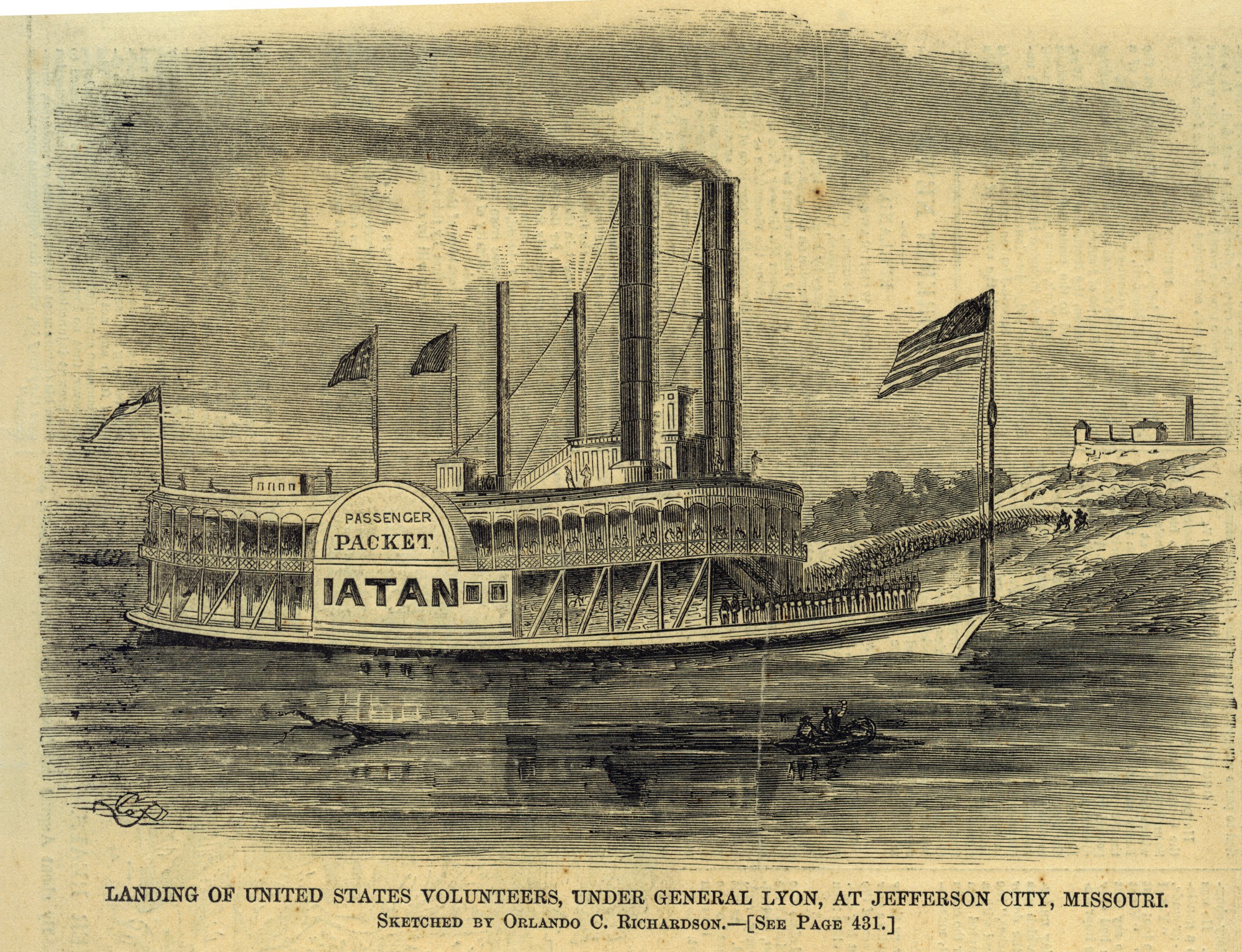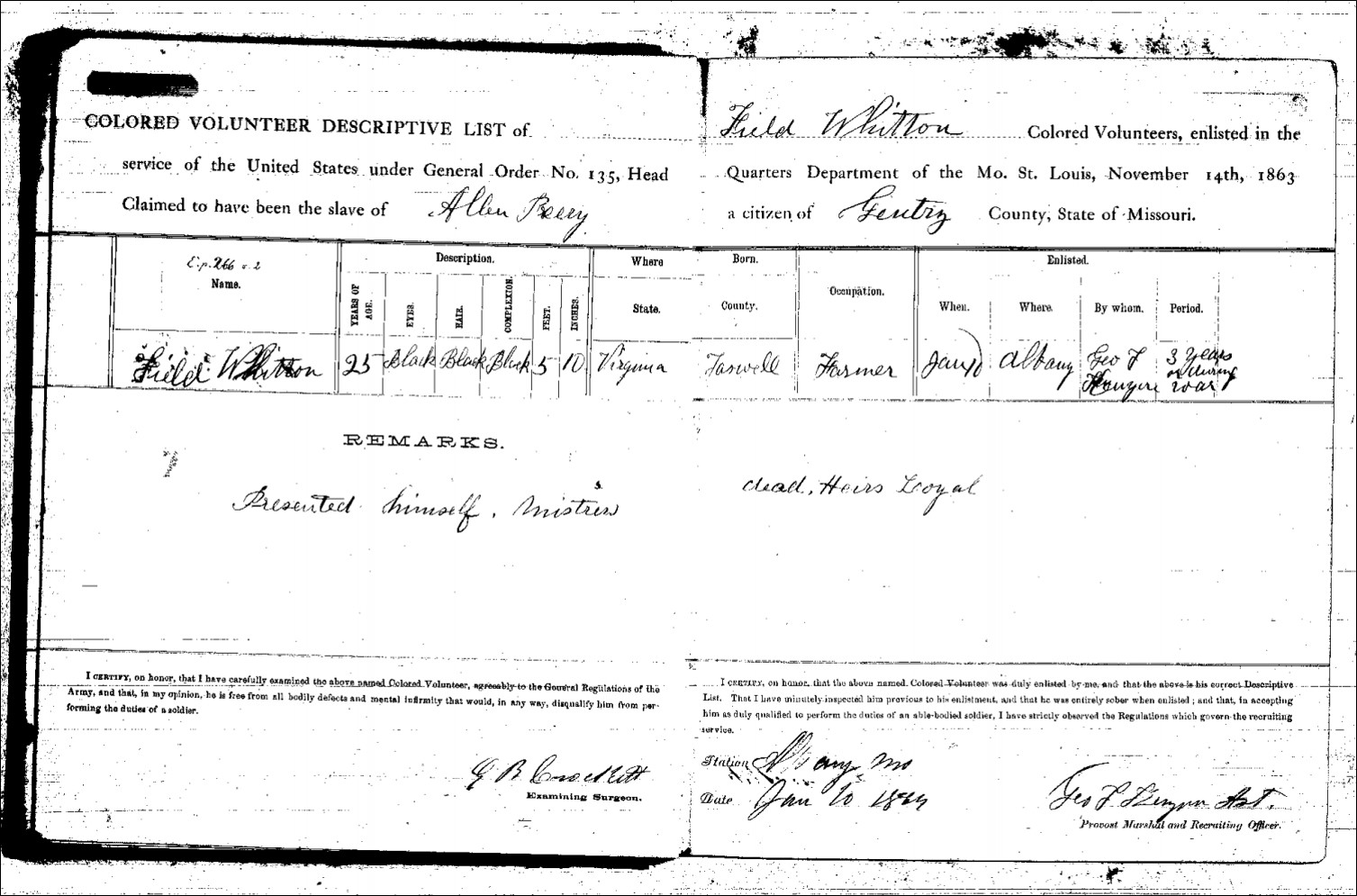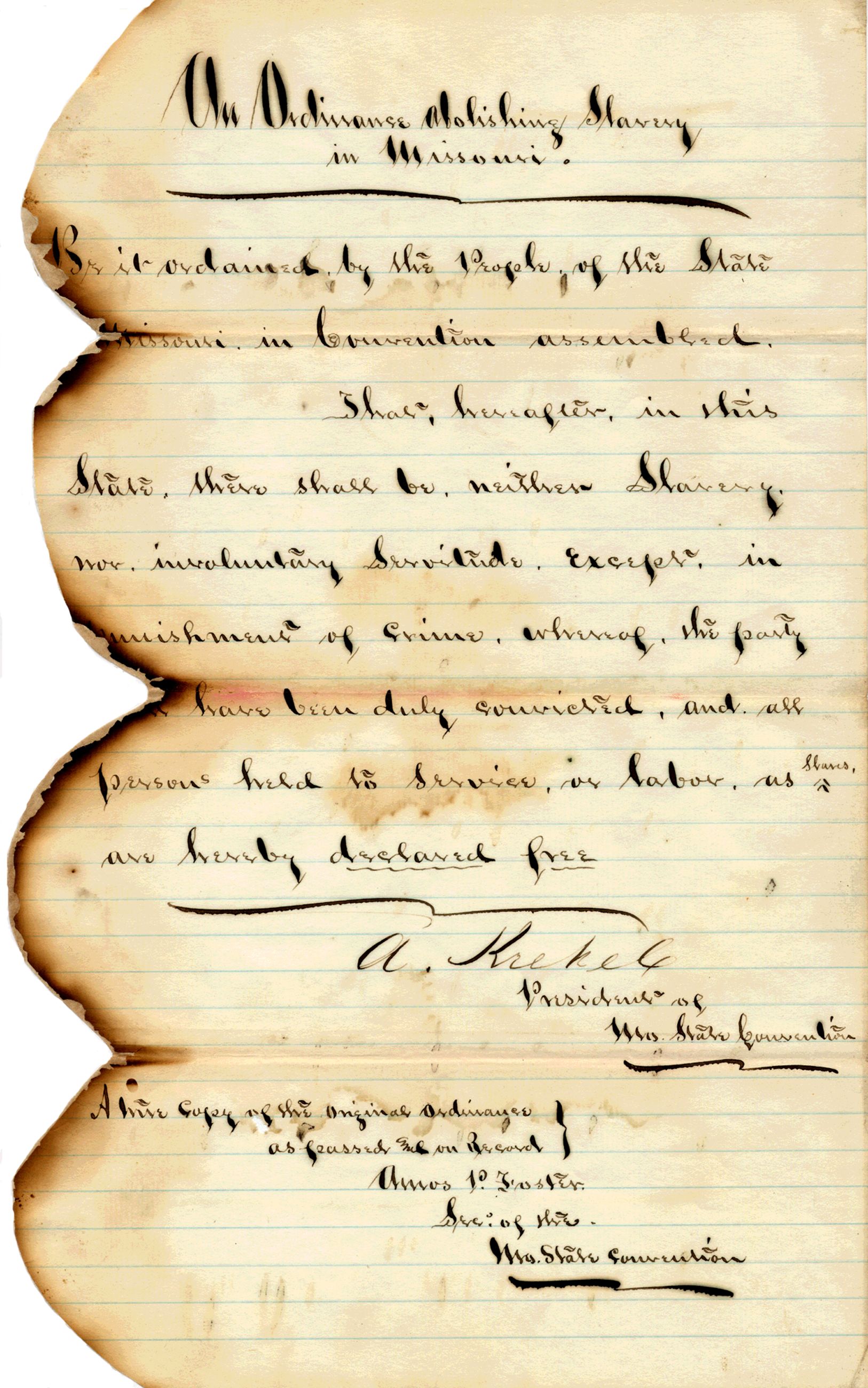| 1861 |
On January 16, 1861, the Missouri General Assembly passed a bill allowing the citizens of Missouri to elect delegates to a State Convention from each senatorial district to determine Missouri’s status in the Union. Not a single advocate of secession was elected. |
| 1861 |
A State Convention began to determine the relationship between Missouri and the U.S. Government on February 28, 1861. On March 19, the Convention voted against seceding from the Union 98-1. |
| 1861 |
Gov. Claiborne Fox Jackson’s attempts to tip the state towards the Confederacy culminated at the Camp Jackson Affair on May 10, 1861. Volunteer Union Army regiments, under Brigadier General Nathaniel Lyon captured 669 secessionist state militia members at Camp Jackson after learning the militia was planning to raid the federal arsenal in St. Louis. While marching the captives through town a hostile crowd gathered. After an initial gunshot, Lyon's men fired into the mob, killing at least 28 civilians and injuring dozens of others. Several days of rioting throughout St. Louis followed. The violence ended only after martial law was imposed. |

Landing of United States Volunteers at Jefferson City, Harper's Weekly, Courtesy of the Missouri History Museum
|
| 1861 |
Gov. Claiborne Fox Jackson abandoned the capitol before Brigadier General Nathaniel Lyon and Union forces occupied Jefferson City on June 13, 1861. The State Convention adopted an ordinance that the offices of Governor, Lt. Governor, Secretary of State, and the General Assembly were vacant on July 31, 1861. This was to oust the pro-Confederate members, with new elections to be held in November. Hamilton Gamble was appointed provisional Governor of Missouri by the Convention. In response, Jackson issued a proclamation on August 5 declaring Missouri a free republic, dissolving ties with the Union. |
| 1861 |
The Battle of Wilson’s Creek on August 10, 1861 resulted in a Union defeat leaving southwestern Missouri in Confederate hands. |
| 1861 |
John C. Fremont issued a proclamation on August 30, 1861 immediately emancipating the enslaved people of Confederate supporters in Missouri. The order was revoked by President Abraham Lincoln on September 11 and Fremont was removed from command. |
| 1861 |
Although unable to achieve a quorum, Missouri’s "Rebel Legislature" (members ousted by the State Convention) adopted an Act of Secession in Neosho on October 28, 1861 and eventually set up government offices in Marshall, Texas. The Confederacy recognized Missouri as its twelfth state, but Missouri did not leave the Union. |
| 1862 |
The Battle of Island Mound, a small skirmish that took place on October 29, 1862 in Bates County, marked the first time Black soldiers saw combat in the Civil War. The 1st Kansas Colored Volunteers fought pro-Confederate guerillas and due to their success, showed that Black soldiers could and would fight for the cause. They would be allowed to enter federal service a few weeks later. |
| 1863 |
President Abraham Lincoln’s Emancipation Proclamation went into effect on January 1, 1863, proclaiming enslaved people to be free in the portions of seceded states not in Union control. The proclamation did not affect Missouri's slaveholders. |
| 1863 |
Recruiting for the first Black Missouri regiment began at Schofield Barracks in St. Louis in June 1863. Over 300 enlisted in the First Regiment of Missouri Colored Infantry, which became the 62nd Infantry of the United States Colored Troops. Over 8,000 Black Missourians served in the Union Army. |

F1892, United States Colored Troops Record of Field Whitton
|
| 1863 |
The Lawrence Massacre occurred when William Quantrill’s Raiders, a prominent Missouri Confederate guerilla group, attacked Lawrence, Kansas on August 21, 1863 killing about 150 men and boys. This was in retaliation for pro-Unionist Jayhawker attacks and the imprisonment of women associated with the guerillas in a makeshift jail in Kansas City. Due to overcrowding and poor conditions, the building collapsed resulting in five deaths. |
| 1863 |
Union General Thomas Ewing issued General Order No. 11 on August 25, 1863, requiring all people living in Jackson, Cass, Bates, and northern Vernon counties to vacate the area unless their loyalty to the Union could be proven. This ultimately resulted in farm animals killed, property destroyed and burned to the ground, and the area became known as the “Burnt District.” |
| 1864 |
The Battle of Pilot Knob (Battle of Fort Davidson) on September 27, 1864 was the first battle of Price's Raid into Missouri. Confederate troops under the command of Major General Sterling Price had entered Missouri with hopes of challenging Union control of the state. Price’s troops were unsuccessful at breaching the Fort despite crossing the moat. The Union soldiers escaped, sneaking past the Confederates and exploding the Fort’s magazine. Price would move on to other battles, but his Raid proved to be the last significant Southern operation west of the Mississippi River and solidified Union control over Missouri. |
| 1865 |
Elected in the November 1864 election, delegates to the 1865 Constitutional Convention in St. Louis passed an ordinance abolishing slavery in Missouri on January 11, 1865 with only four delegates voting against it. The ordinance passed three weeks before the U.S. Congress proposed the Thirteenth Amendment to the U.S. Constitution abolishing slavery. |

RG5.24, 1865 Constitutional Convention, Ordinance Abolishing Slavery
|
| 1865 |
Missouri was the eighth state to ratify the Thirteenth Amendment to the U.S. Constitution ending slavery on February 6, 1865. The amendment went into effect on December 18, 1865. |
| 1865 |
Confederate General Robert E. Lee surrendered to Union General Ulysses S. Grant at Appomattox, Virginia ending the Civil War in the east on April 9, 1865. Missouri Confederate Brigadier General M. Jeff Thompson surrendered the State Guard’s forces in Arkansas near Wittsburg and Jacksonport, Arkansas on May 11. However, the Battle of Palmito Hill (the last battle in the war) occurred in Texas from May 12 to 13, 1865 and included Missouri troops from the 62nd Regiment of the U.S. Colored Troops. |
| 1865 |
Missouri’s second Constitution known as the “Drake Constitution” was adopted on April 10, 1865. This Constitution banned enslavement without exception and limited the rights of former Confederates and Confederate sympathizers. One of the new provisions known as the “Ironclad Oath” required teachers, clergy, judges, and others to promise they had not committed “disloyal acts.” If not, the Constitution also forced removal of judges, court clerks and recorders, and sheriffs from their positions and the right to vote was restricted to only white Union men. |
| 1865 |
Black Missouri leaders organized the Missouri Equal Rights League in October 1865. Considered Missouri's first Black political activist organization, League members fought for legal equality, placing emphasis on education and voting. |
| 1866 |
The Lincoln Institute (renamed Lincoln University in 1921) received its first students on September 17, 1866. The Institute was incorporated to provide education for Black students in Missouri and was founded by Black soldiers of the Civil War's 62nd and 65th Regiment Infantry of the United States Colored Troops. |
| 1867 |
Missouri was the 17th state to ratify the Fourteenth Amendment to the U.S. Constitution addressing universal citizenship rights and equal protection under the law on January 25, 1867. The amendment went into effect on July 9, 1868. |
| 1867 |
The Woman Suffrage Association of Missouri was organized in St. Louis on May 8, 1867. The sole purpose of this organization was the political enfranchisement of women, the first such organization in the United States. |
| 1869 |
“Big Mound” in St. Louis was destroyed in April 1869 for railroad and other developments in St. Louis. St. Louis's nickname, "Mound City," came from earthen mounds built by indigenous people of the Mississippian culture. There were originally over 40 major mounds in and around what is now St. Louis with numerous others in the region |